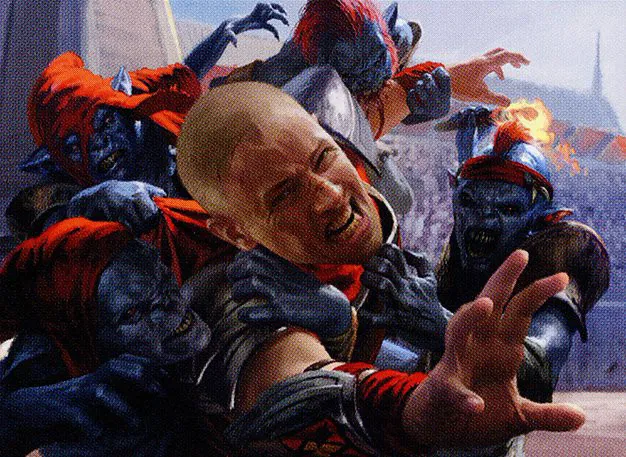
Mono Red has long been the deck of choice for players who want to end games fast and punish slow starts—but its dominance over Midrange decks isn’t just about early aggression. The true power of Mono Red lies in its sideboard gameplan.
Against Midrange, it transforms from a blitzing threat into a finely tuned weapon that strips away stabilizing tools, dodges removal, and keeps the pressure high through every phase of the game. This matchup isn’t a coin flip—it’s a calculated dismantling, and Mono Red brings all the right tools to finish the job.
Mono Red dominates Midrange decks by exploiting their slower pace and clunkier curve with a ruthlessly efficient, low-to-the-ground gameplan. In Game 1, Mono Red’s aggressive starts—led by cheap threats and burn spells—punish Midrange’s reliance on tap-lands and value creatures that don’t immediately impact the board. Cards like Monastery Swiftspear, Kumano Faces Kakkazan, and Screaming Nemesis pressure life totals early, often before the Midrange player can stabilize. Because Midrange decks aim to trade up on value, they struggle when they’re forced to make unfavorable trades just to stay alive.
Post-board, Mono Red sharpens its edge with cards that target the exact weaknesses of Midrange decks. Roiling Vortex punishes lifegain and slow stabilization attempts. Meanwhile, Chandra, Dressed to Kill, and Hazoret the Fervent dodge traditional removal and provide recursive pressure. These sideboard threats force Midrange decks into awkward decisions: either hold up removal and fall behind tempo-wise, or tap out and risk getting punished by hasty, resilient threats.
Mono Red also brings in answers that specifically neutralize Midrange’s stabilizing tools. For example, Scorching Shot, or Fry offer clean removal for high-toughness creatures like Sheoldred, the Apocalypse. Where Midrange decks rely on sticking one or two big threats to stabilize, Mono Red’s sideboard removal spells ensure those threats get efficiently handled, keeping the pressure up and life totals low.
This keeps the Midrange deck from ever fully flipping the tempo. Here below is an example sideboard list.

Critically, Mono Red’s sideboard plan isn’t just reactive—it transforms the deck into a slightly more robust version of itself without sacrificing speed. It adds stickier threats, more reach, and better interaction tailored to Midrange’s gameplan. The Midrange player is often forced to dilute their deck with lifegain or extra sweepers that don’t match Mono Red’s post-board mix of haste creatures and planeswalkers. The Red player, by contrast, stays lean and focused, swapping only to improve threat quality and card efficiency.
In short, Mono Red wins the matchup through tempo, focused sideboarding, and better use of the sideboard slots. Where Midrange decks struggle to hedge against multiple angles of attack, Mono Red stays tight and aggressive, adding just enough disruption to sidestep stabilization while maintaining the clock. The result: Midrange is consistently forced into a defensive posture it wasn’t built to play, and Mono Red closes before the window for value even opens.
